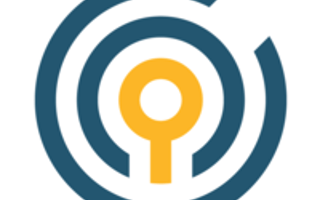At Civis, we often find that a solution we’ve created for one industry can be adapted to solve a similar problem in another because foundationally, the data and statistical problems are drastically similar, even if the clients themselves are as different as night and day. From the outside, our data scientists can be considered generalists in that they may be doing digital attribution for a multinational media client while simultaneously helping a non-profit determine how they can persuade their donors to give more.
While this approach has been a great way to translate what we do for many, we know this won’t work when it comes to working with our healthcare clients. It’s true that patients could benefit from things that seem like they’re a given to consumers in other sectors, like greater price transparency and a better customer experience. But it would be naive to think that the ways people consider a medical procedure or decide on an insurance policy is like shopping for a product. Moreover, there are also unique regulatory, security and privacy complexities that we care very much about navigating so we ensure we’re protecting the best interests of patients.
I joined Civis last year to help lead a data science team devoted to healthcare analytics. We’ve been doing work for medical providers, payers, healthcare nonprofits and businesses since we started, but in 2016 we decided to establish Civis Healthcare as a formal practice. We’re developing data products tailored to hospital systems, insurers, medical device and supply manufacturers, and other healthcare companies. Civis as an organization is already fully HIPAA-compliant, and we’re taking the necessary steps to make software HIPAA-compliant too (more to come on that later this summer).
So how do we think we can be the most helpful to healthcare customers?
When you need more data for an overall picture of a person’s health.
We’re understanding more and more how important it is to know about a person’s life outside of the doctor’s office in order to drive positive health outcomes. For example, how far a person lives from the nearest grocery store and whether that person has been uninsured for years are critical pieces of information that help differentiate between a person who is able to manage his or her diabetes and a person who has a much poorer prognosis. We often help our clients develop a deeper understanding of their population by matching it to our database. In cases where the data points we need do not exist, we rely on our social science team to field surveys and fill in the gaps. We’ve used variations of this technique to model the uninsured, to identify people at-risk of chronic disease, and identify potential donors in the non-profit sector.
When you have really messy medical data.
Between claims, encounters, lab and billing data, and transcribed notes, healthcare data is messy. But if it can be harnessed, it provides valuable information that describes a patient’s clinical condition, treatments, and utilization of healthcare. We’ve dealt with this before and have advanced data science techniques in our toolbox, like being able to use supervised learning techniques to condense millions of sparse ICD-9 or 10, CPT and HCPCS codes into diagnosis and treatment topics. We’ve also been able to take unstructured data and use machine learning to assign labels from millions of free text entries so our clients can build categories of events at scale. We see a lot of opportunity for applying deep learning to healthcare data, and we’re not only thinking about it, we’re actually doing it.
When you have a ton of data tools, but none allow you to “do data science.”
It seems like there is no shortage of healthcare data tools in the market already. Some are built into electronic record applications, others are stand-alone platforms. Some focus on reporting, others focus on visualizing data. You’re probably thinking that the last thing that healthcare organizations need is yet another piece of software to add to the enterprise stack. But today if you had to use existing tools to predict the likelihood of a patient failing to show up for an appointment, build workflows that helped you identify new patients that you’d like to advertise to and optimized your marketing budget for doing so, or even perform a simple task like matching people in two different lists when you don’t have a unique identifier, what would it take? Our Platform has been built by data scientists who understand the balance between wanting it to be easier to perform some of the rote data tasks and wanting the flexibility to bring their own code and customize workflows as they wish.
There are a lot of problems plaguing the U.S. healthcare system and the stakes are high. Unfortunately, data science alone won’t fix them. But here at Civis, we believe that when it’s used to inform business decisions and process improvements, data science can help change delivery of care for the better and even save lives. Case in point: our recommendations for Vice President Biden’s Cancer Moonshot Project that outlines how better data infrastructures could be built to help accelerate the discovery of new treatments and cures for cancer. Whether the problem at hand is how to better manage risk pools, test alternative payment models, predict clinical outcomes or advance precision medicine, we’re looking forward to playing a role in helping us all lead healthier lives.







